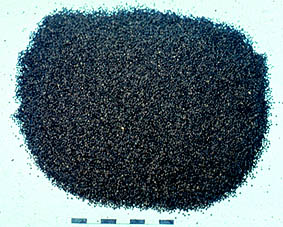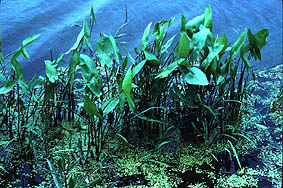
Charred goosefoot and knotweed seeds from a pit flot sample
The starchy seed complex includes maygrass, knotweed, little barley, and goosefoot. Maygrass is a floodplain weed native to the Ozarks introduced by Woodland people to the American Bottom where it thrives. It ripens in the late spring and was particularly important to the Mississippian springtime diet after winter stores were becoming depleted and before the mid-summer green corn harvest. Goosefoot, a weed well-adapted to wet and recently flooded ground, may have been important during years of poor maize harvest because it is very hardy and produces an abundance of nutritious seeds.
The oily seed complex, a group of cultivated plants that produce nutritious seeds, includes squash, marshelder, and sunflower. All are often found in abundance in American Bottom Mississippian sites.
A wide variety of other wild plants that yielded seeds, fleshy fruits, tubers, and greens were also important to the Mississippian diet. Important wild plants include wild bean, American lotus, arrowhead, grape, persimmon, and sumac, acorn, hickory and other nuts.
